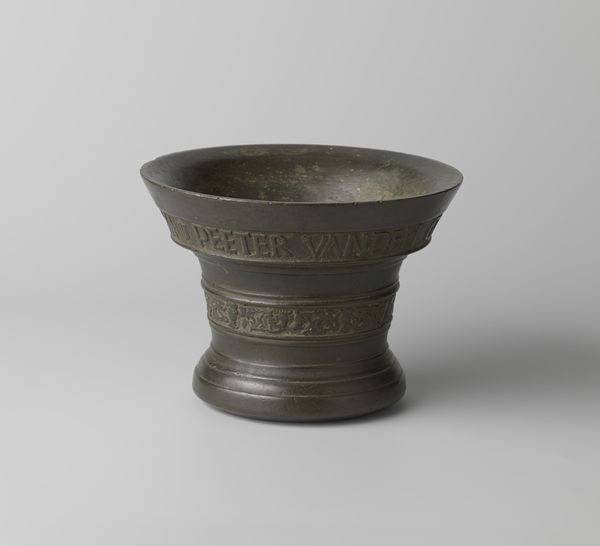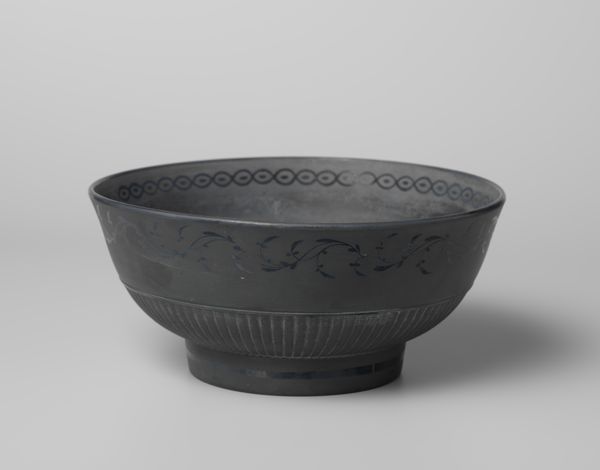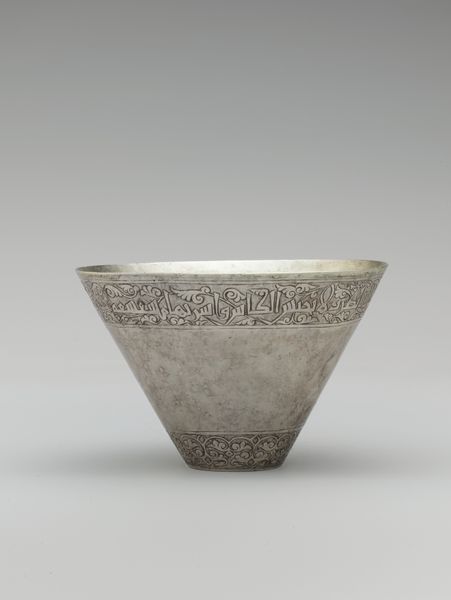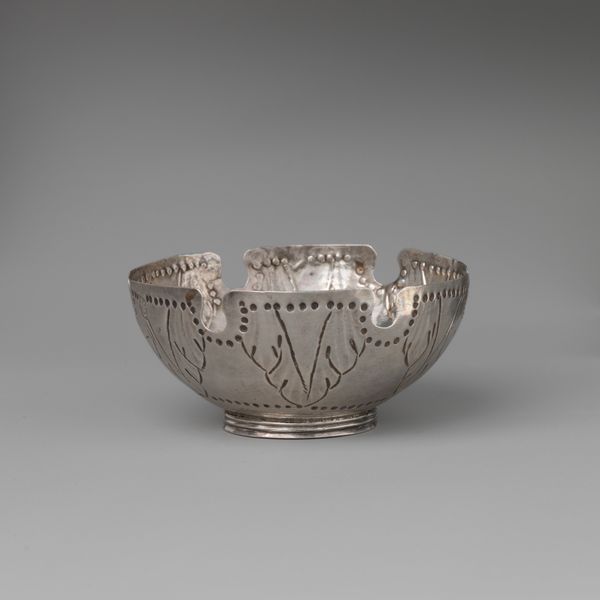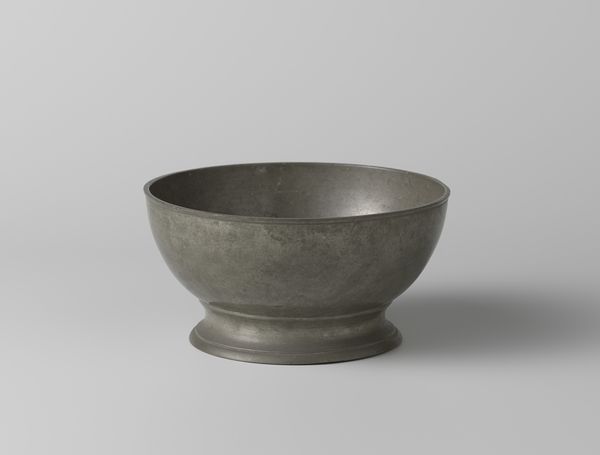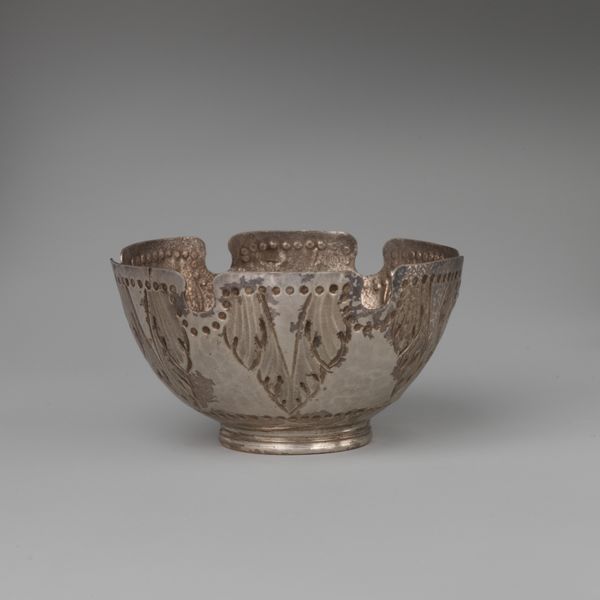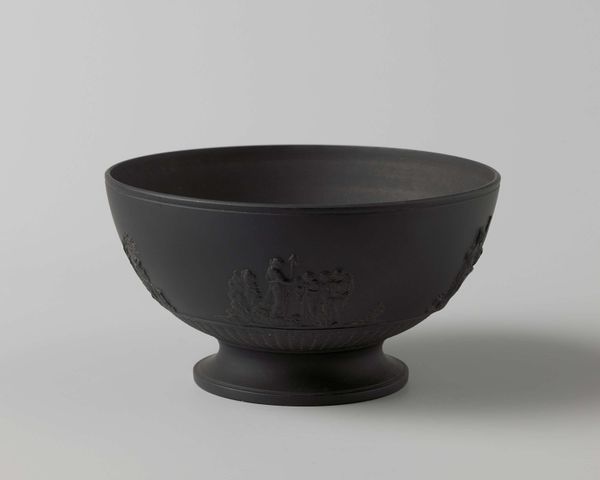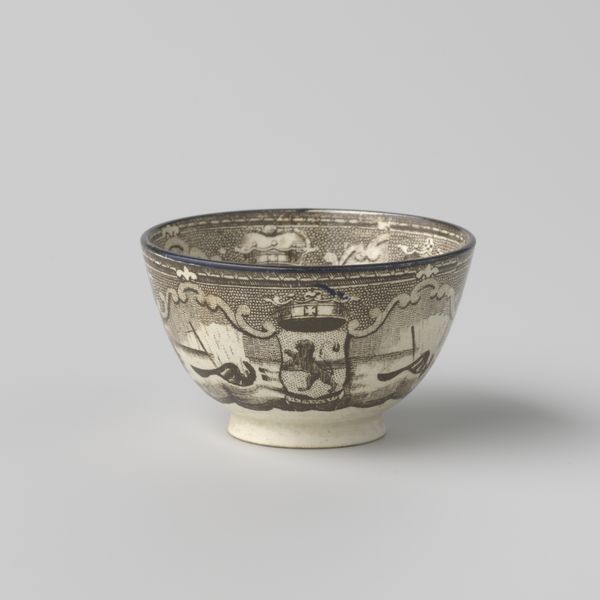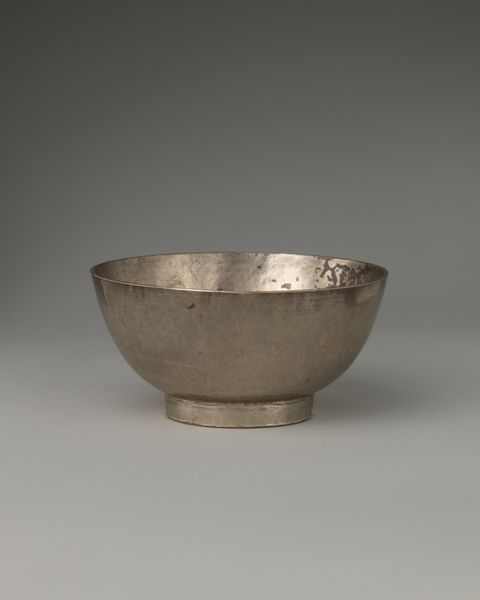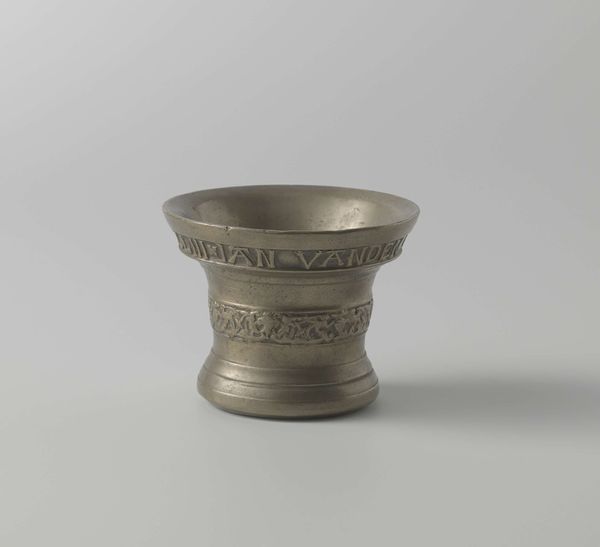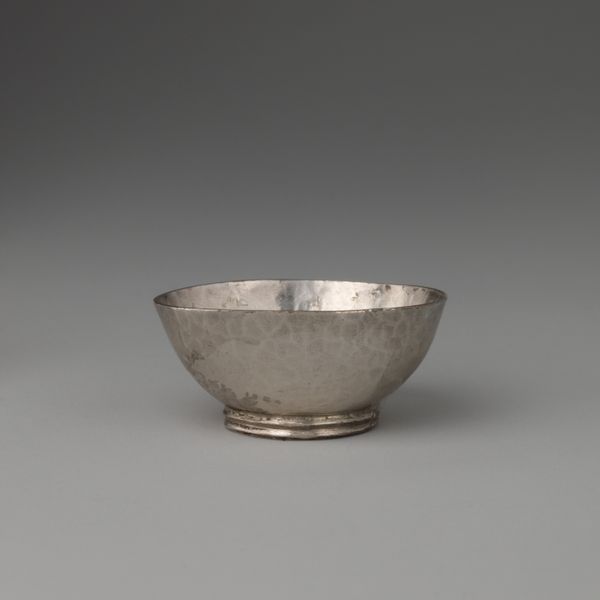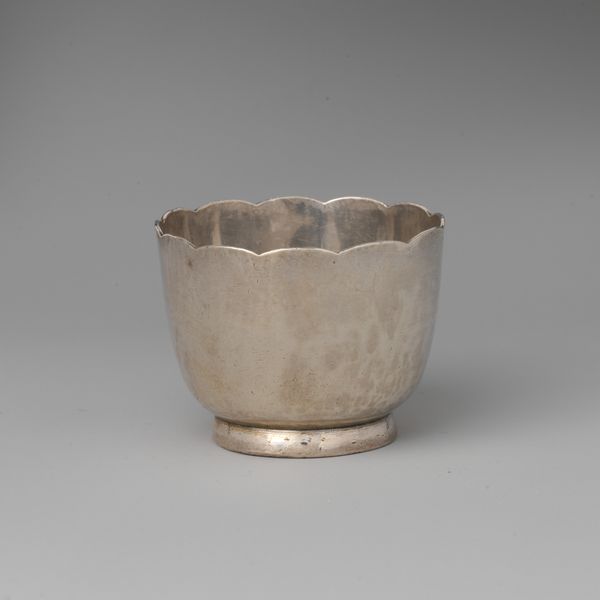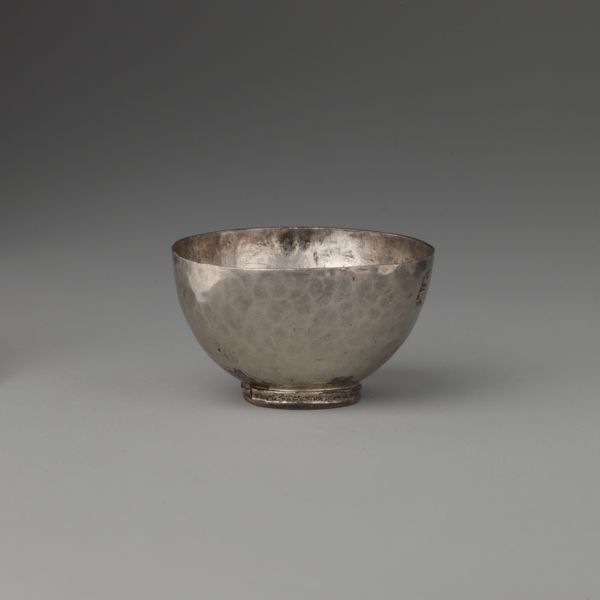
Dimensions: 2 1/8 × 4 3/8 in. (5.4 × 11.1 cm)
Copyright: Public Domain
Editor: We’re looking at an 18th-century ceramic bowl made by Wedgwood and Bentley, currently held at the Metropolitan Museum of Art. Its matte black surface gives it such a somber mood, despite all of the decorative relief work around the sides. What visual elements stand out to you? Curator: The monochromatic surface indeed prompts a consideration of form. The bowl presents a tripartite division: the fluted base, the band of floral arabesques, and the subtly textured lip. This careful layering evokes a dialogue between classical and naturalistic forms, doesn't it? Editor: It does. The symmetry gives it a classical feel, while the flowers add something more organic. Curator: Observe how the fluting directs the eye upwards, culminating in the dense floral arrangement. The artist masterfully manipulates line and texture to guide the viewer's gaze and imply a structural hierarchy. It’s a complex formal dance, wouldn't you agree? Editor: Definitely, the upward motion really holds your attention, moving around the bowl. Is there a meaning to using only black? Curator: The lack of color encourages a concentration on the interplay of light and shadow across the sculpted surface. Think about how that limited palette heightens our perception of the subtle modulations in the ceramic material itself. Editor: So the design itself comes forward? That's fascinating. I hadn't considered how much the *lack* of color contributes to the piece. Curator: Precisely. Form supersedes the need for overt ornamentation. It encourages one to appreciate pure design. I'm glad that the intrinsic aesthetic has become clear.
Comments
No comments
Be the first to comment and join the conversation on the ultimate creative platform.
